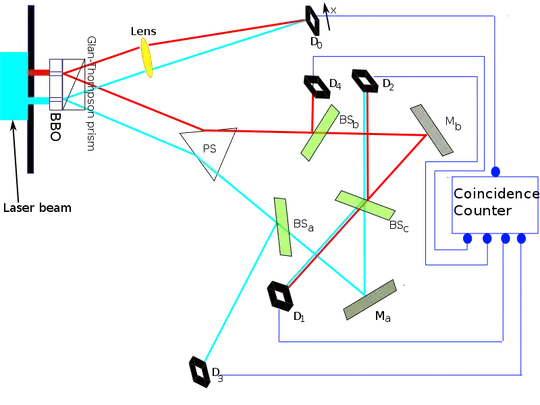I'm using figure 2 of wikipedia's entry
https://en.wikipedia.org/wiki/Delayed-choice_quantum_eraser
If the idler beam is undetected, we get a interference pattern. If it's detected, there's no interference pattern. It seems that if we point the idler beam to Vega, we can observe from the presence of patterns to determine whether there are civilizations detecting the photons.
But this is nonsense. In fact in the experiment described in wikipedia, the pattern on the D0 screen is just a lump without any interference pattern. It's actually an 50%/50% superposition of different interference patterns, such that the peaks and lumps cancel out. The interference pattern only appears if we only count the photons whose idler beam triggers D3 or D4.
My question is : Why don't they just directly detect whether the idler beam should be detected or not, instead of using a beamsplitter, so that the pattern on D0 is not a 50%/50% mixture of signals? So that by observing the pattern we can be sure whether the idler beam is detected or ignored?
Phrased differently, I'm saying that in a double slit experiment, if you detect which-way the electron goes, but then erases the information, you should get a interference pattern. Now if you let people from a light year away to decide whether to erase the information, you have a device that detects whether intelligent life exists in a light year away instantly, by just observing the interference pattern.
